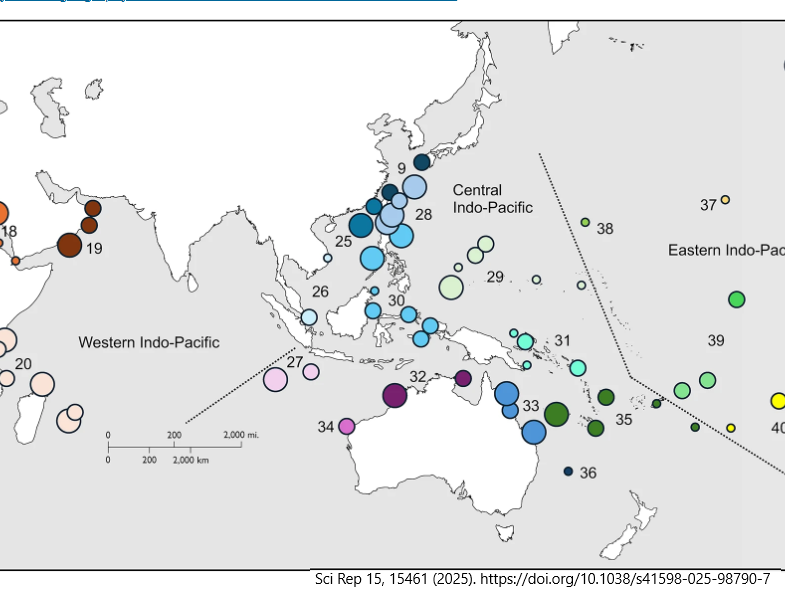
Documentation of biodiversity and its geographical distribution is necessary to understand the processes and drivers of evolutionary diversification as well as to guide conservation and management initiatives. Among the most emblematic patterns of biodiversity in the world’s oceans is the Coral Triangle (Indo-Australian Archipelago), widely recognized to be the center of species richness for a variety of marine life forms. The distribution of biodiversity remains incompletely documented, however, for a majority of reef-associated invertebrate taxa, including the zooxanthellate soft corals (Octocorallia) that dominate hard substrate on many Indo-Pacific reefs. We used a genetic approach to document the diversity of Indo-Pacific soft corals, sequencing two single-locus barcoding markers for > 4400 soft coral specimens and assigning individuals to molecular operational taxonomic units as proxies of species. We document two centers of species richness for zooxanthellate soft corals, one in the Indo-Australian Archipelago and a second, equally diverse center in the Western Indian Ocean. Centers of endemicity for soft corals are coincident with these centers of species richness, although the peripheral Red Sea and Hawaii also support high proportions of endemic taxa. The patterns documented here suggest that biogeographic distributions of soft coral families may be driven in part by larval dispersal potential: taxa with benthic larvae are absent from most oceanic islands of the central Pacific and are represented by higher proportions of endemic taxa in other geographic regions. Our findings demonstrate the distinct biogeographic patterns among reef taxa and underscore the need to document and analyze species distributions of more reef-associated invertebrate groups to derive a complete picture of reef biogeography.












